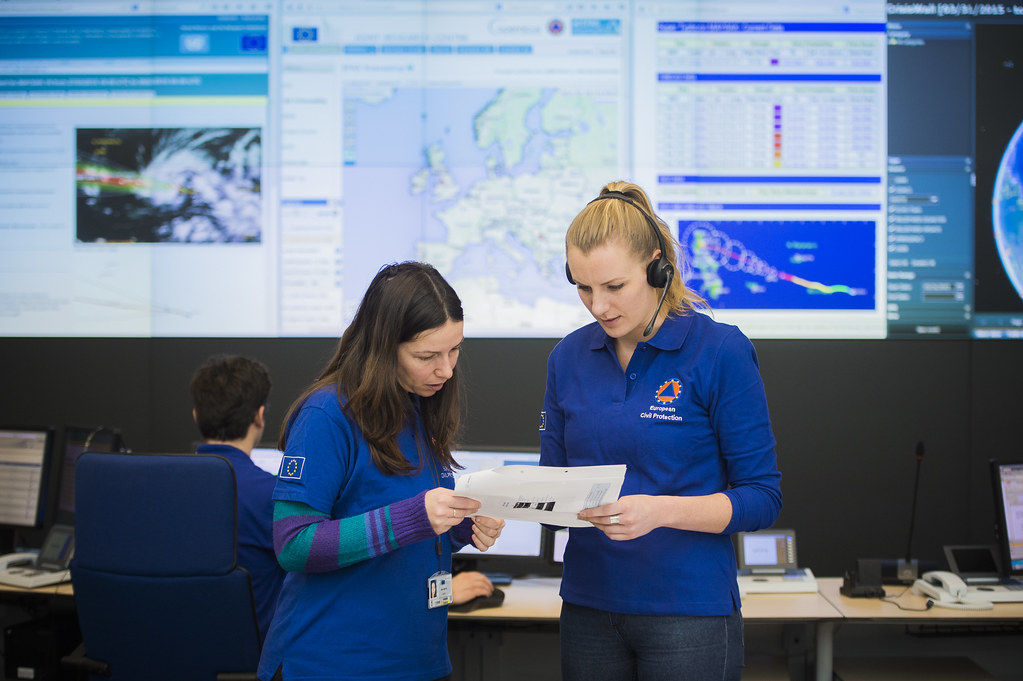Learning: Civil Protection and the Adoption of New Technologies

8 May 2024
Filip Sever, Project Manager at Kajaani University of Applied Sciences
Through the centuries, civil protection has adopted a wide range of tools to ease and improve their work. Horse-drawn carriages have been replaced by trucks, oxygen tanks allow firefighters to enter areas with heavy smoke, radios allow field personnel to communicate with the mission control room and across the disaster site, computers have replaced pen and paper and typewriters. These changes occurred slowly over time and necessitated new ways to prepare and respond to incidents. Preparation in the work of civil protection professionals takes a significant amount of time. The workers require training in various types of incidents and with all the different equipment required to perform their duties.
Civil protection has well established procedures on how to respond and act in different incidents. Within these procedures, tools and technologies are integrated to provide enhanced awareness of the incident site and any victims, provide communication, and enable coordination among the operatives. In most cases, the adoption of new tools and technologies is a slow process as it requires careful testing and consideration within the context of the workflow, its efficacy, and associated costs of adoption. The staff require time to learn how to use it and have time to train with it. Other factors that are critical in the learning process are opportunities for vicarious experiences and the support of the organisation (Kent & Giles, 2017). Through practice, the workers’ self-efficacy increases, and consequently their willingness to adopt the technology (Pan, 2020). Among civil protection staff, the number of people who will require training is significant. These requirements highlight the need for workplaces to consider learning as an integrated part of working (Billett, 2023).
One way that learning needs are covered is participation to research and development projects. Research and development projects are beneficial to both technology developers and providers who gather feedback on their solutions while offering civil protection professionals early access to evaluate and trial new solutions for their work. Through interactions between technical experts and civil security experts, both sides are exposed to external areas of expertise, requiring adaptation to different ways of interaction, and working. The process is beneficial to both sides as it contributes to the design of suitable training activities and competence development, as well as the design of the technology (Flandin, 2022; Haskins et al., 2020). While not a pronounced part of the research and development activities, the learning within the project is an inherent component in the gradual co-creation, testing and innovation that occurs (Lemmetty & Billet, 2023). The outcomes are however highlighted in the third phase of the project, where end users together with technology providers examine and report on adoption opportunities, innovation and the future steps towards further development of the outcomes reached.
In practical terms, the TEMA project undergoes three main phases with a high degree of interaction between professional domains where knowledge construction occurs. In the initial phase of the project, both sides introduce their work, identify gaps, and work together to plan how to close them and design solutions through the project activities. The second phase is where the solutions created are tested at scale across pilot cases. This is an iterative process and consists of at least two large-scale demonstrations. The pilot phase can require significant preparation time, needing end users to test and prepare for the use of the technologies within their work contexts. The third phase is where the results of the pilots are evaluated and analysed against the initial starting point of the project. Both parties work together to assess the developed solution and its potential to improve the work of civil protection professionals.
The TEMA project is now finishing the first phase of the work, where the gaps and requirements of the civil protections have been identified. Soon the work will move towards the development phase, where technical partners will develop the solution and large-scale trials will be organised across the four pilot cases within the project.
References
Billett, S. (2023). Relevance of Workplace Learning in Enterprise Transformation: The Prospects for Singapore. Singapore Labour Journal, 02(01), 6–21. https://doi.org/10.1142/S2811031523000128
Flandin, S. (2022). Four Lines of Analysis for Civil Security Crisis Simulations: Insights for Training Design. In S. Flandin, C. Vidal-Gomel, & R. Becerril Ortega (Eds.), Simulation Training through the Lens of Experience and Activity Analysis (Vol. 30, pp. 43–60). Springer International Publishing. https://doi.org/10.1007/978-3-030-89567-9_3
Haskins, J., Zhu, B., Gainer, S., Huse, W., Eadara, S., Boyd, B., Laird, C., Farantatos, J., & Jerald, J. (2020). Exploring VR Training for First Responders. 2020 IEEE Conference on Virtual Reality and 3D User Interfaces Abstracts and Workshops (VRW), 57–62. https://doi.org/10.1109/VRW50115.2020.00018
Kent, A. M., & Giles, R. M. (2017). Preservice Teachers’ Technology Self-Efficacy. SRATE Journal, 26(1), 9–20.
Lemmetty, S., & Billet, S. (2023). Employee-driven learning and innovation (EDLI) as a phenomenon of continuous learning at work. Journal of Workplace Learning, 35(9), 162–176. https://doi.org/10.1108/JWL-12-2022-0175
Pan, X. (2020). Technology Acceptance, Technological Self-Efficacy, and Attitude Toward Technology-Based Self-Directed Learning: Learning Motivation as a Mediator. Frontiers in Psychology, 11, 564294. https://doi.org/10.3389/fpsyg.2020.564294

